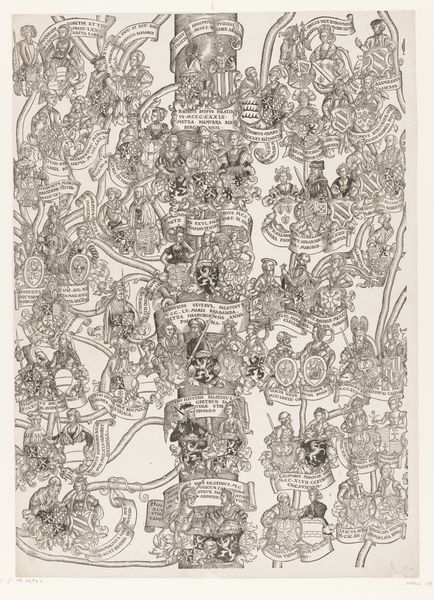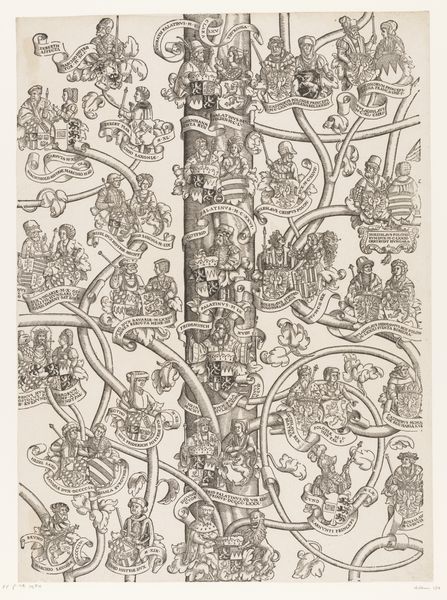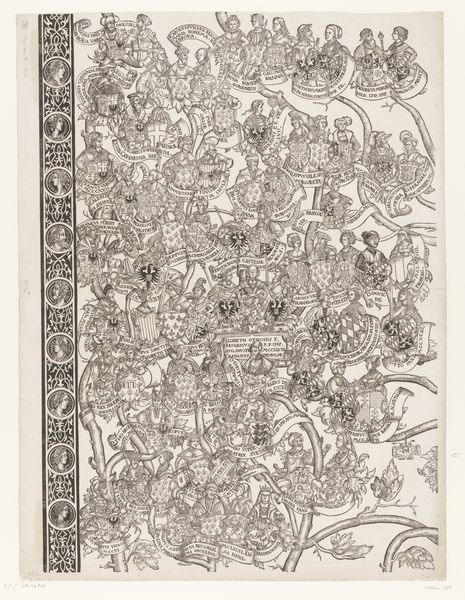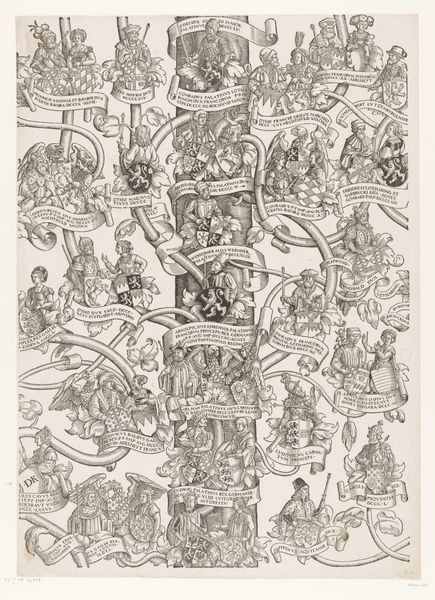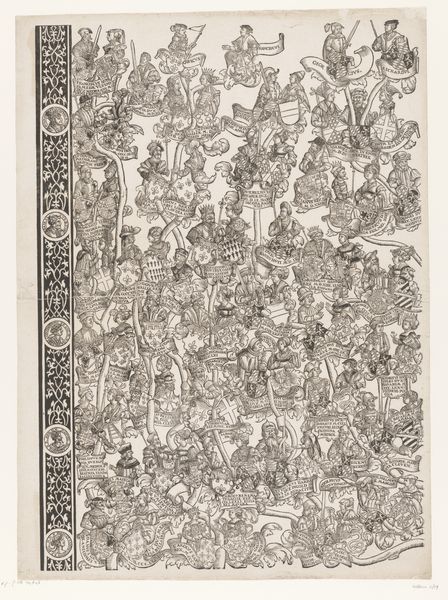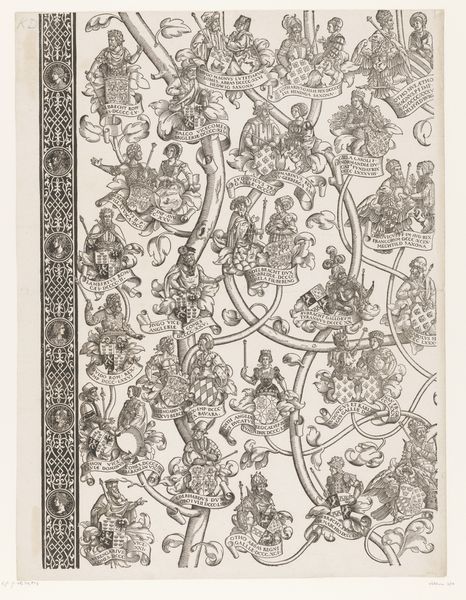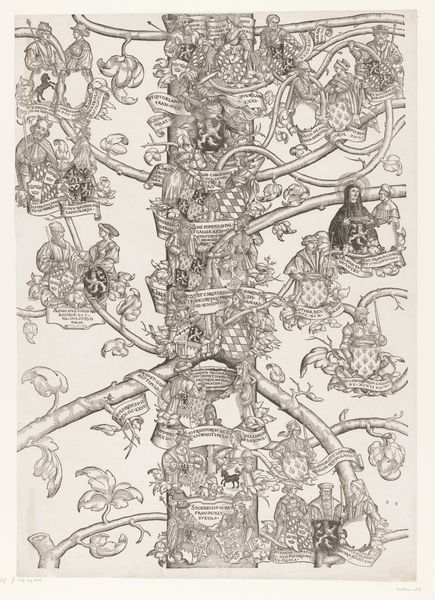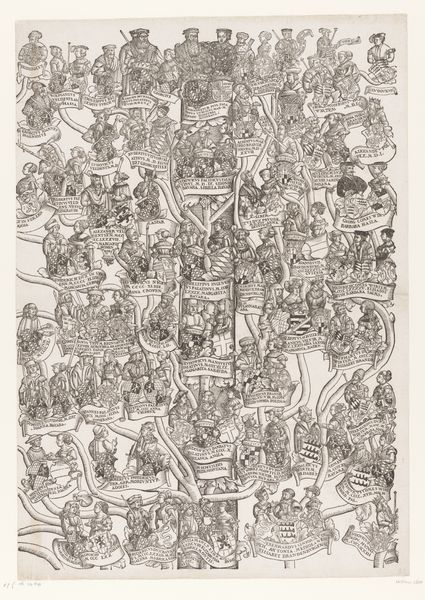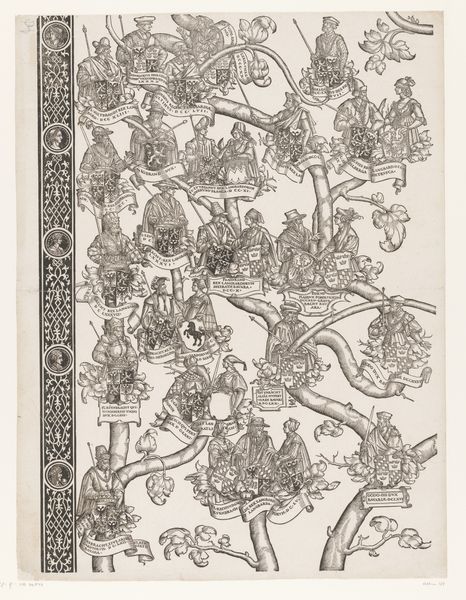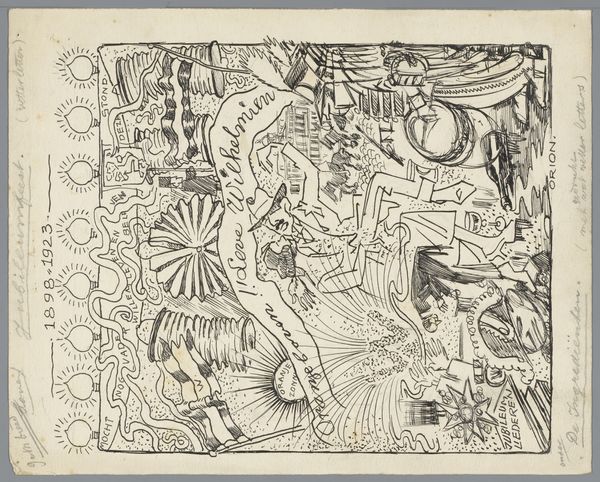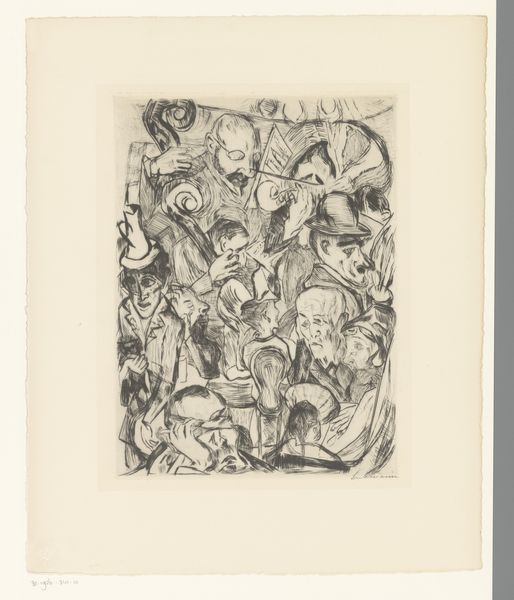
Stamboom van Frederik en Ottheinrich van Palts-Neuburg (plaat 18) 1535 - 1594
0:00
0:00
drawing, print, ink, engraving
#
portrait
#
drawing
#
pen drawing
# print
#
figuration
#
11_renaissance
#
ink
#
line
#
history-painting
#
northern-renaissance
#
engraving
Dimensions: height 617 mm, width 453 mm
Copyright: Rijks Museum: Open Domain
Editor: This fascinating piece is titled "Stamboom van Frederik en Ottheinrich van Palts-Neuburg," dating from 1535 to 1594. It's attributed to Monogrammist HS and currently resides in the Rijksmuseum. The artwork is a pen and ink drawing. I’m struck by how intricate and dense the composition is. What’s your take on it? Curator: Looking at this genealogical tree through a materialist lens, I see the painstaking labor involved in its creation. The use of pen and ink, particularly in an engraving designed for reproduction, speaks volumes about the process of disseminating dynastic power. Think about the social context: who was consuming these prints? Were they primarily for the elite, reinforcing their status through depictions of lineage and heraldry, or did they circulate more widely, shaping public perceptions of power? Editor: That's interesting. I hadn't thought about who was actually seeing this after it was made. Is the materiality – the ink, the paper – significant beyond just being the means of production? Curator: Absolutely. Consider the quality of the paper, the type of ink used. Were these luxury materials, signaling wealth and prestige? Or were they more readily available, suggesting a broader reach for the image? Furthermore, the very act of creating a print implies a desire for mass consumption, a move away from unique, handcrafted objects toward a more democratic distribution of imagery. Editor: So it challenges the traditional art/craft binary. It is about distribution of propaganda. Curator: Precisely. The “high art” subject matter – the noble lineage – is being conveyed through a "lower" craft medium. What’s your sense of the relationship between the visual imagery and its intended political function, regarding production? Editor: It feels like a conscious attempt to manufacture and standardize the imagery of nobility and manufacture their historical legitimacy. It underscores how images of power can be meticulously constructed and disseminated. Curator: Agreed. Seeing this genealogy through its material components really reveals a potent message about not just the "what", but how its cultural work took shape within that specific political and cultural arena, and it offers unique access to that message.
Comments
No comments
Be the first to comment and join the conversation on the ultimate creative platform.
